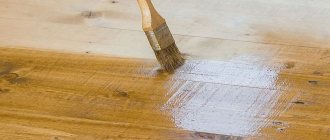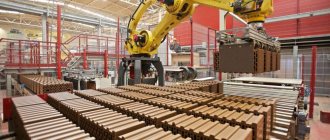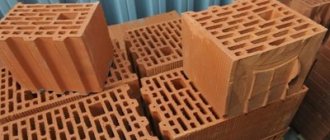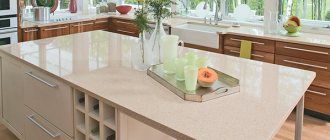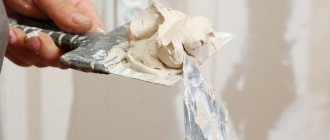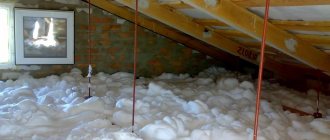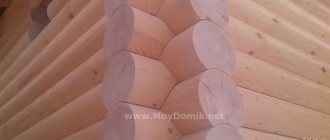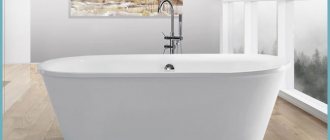Porous brick is also called hollow block and is a type of large-sized ceramic product. The structure of these blocks is porous. If we compare them with ordinary bricks, then the first one has less impressive weight, an increased level of thermal insulation and larger shapes. The density of these products is much less compared to the density of solid bricks.
For private housing construction, such products are ideally suited, because they allow work to be completed in a short time and also help to save money. The last factor is due not only to the reduction in the volume of the solution, but also to the absence of the need for thermal insulation of the walls.
The main advantages of porous bricks
The products described have many advantages, which is why they are so in demand today. They reduce masonry work time, reduce the number of cold bridges, provide low volumetric weight and reduce delivery costs. Recently, porous brick has become more and more preferable also for the reason that with its help it is possible to reduce the consumption of mortar. The wall ultimately becomes warmer, which is ensured by the structure of the large-format brick.
It has a lot of air inside, so the wall is 20% warmer compared to one built from ordinary brick. If a mason uses solid bricks in his work, then he is able to lay about 4 m3 of masonry per shift. If we are talking about porous blocks, then the mentioned parameter already reaches 8 m3. Solution consumption is reduced by reducing the number of layers. The load on the foundation can be reduced, as can the costs of its construction. This is due to the insignificant volumetric weight of the described products, which is 800 kg/m3.
By using porous bricks to build a house, you can reduce the cost of operating the building. This is especially true when compared with houses built from other building materials. This approach is an excellent solution to the problem of energy saving. The thermal conductivity of the masonry varies from 0.154 to 0.26 W/m3.
Warm ceramics KERAKAM
Several years ago, our specialists met KERAKAM Super Thermo bricks produced in Samara at an exhibition. Sellers of warm ceramics KERAKAM claim that a thickness of 300 mm is sufficient for the construction of load-bearing walls of 2-3-story country houses without additional insulation and significant benefits when building houses from this brick.
In principle, it would be interesting for us, as builders, to offer such a miracle material to private developers if it really had the declared characteristics. So we decided to conduct an internal study to find out: is this really true? Read on to find out what came out of this study.
We will present some statements from the manufacturer (sellers) of KERAKAM, which can be read on their websites, and below them are comments from Full House specialists.
Statement #1. Thanks to the smaller format of the block and the thickness of the erected wall of 300 mm, as well as lower weight, the weight of the house and the load on the ground are significantly reduced, which allows the use of a smaller foundation. This will help reduce your foundation costs by 2.5-3 times.
If we take the dimensions of a house of 10x10m with 380mm brickwork, then the cost of building, for example, a monolithic foundation slab with a reinforced concrete grillage 300mm high and 380mm wide will be 775,000 rubles (all inclusive). If you use the KERAKAM 300mm format, then the width of the grillage is correspondingly reduced to 300mm, the dimensions of the house become 9.84x9.84m, and the cost of building the foundation will be 762,000 rubles (all included). Thus, the benefit on the foundation when using 300mm format blocks is 13,000 rubles. There is no reduction in expenses by 2.5-3 times even close! We conclude that statement No. 1 is nothing more than a beautiful advertising phrase.
Statement No. 2. Increased labor productivity and reduced construction time. Labor productivity when working with warm Kerakam ST 30 blocks is 9 m3 per 8 working hours per bricklayer.
A team of masons performs the same number of manipulations both when working with 380mm and 300mm format blocks and lays out the same number of blocks, which is about 400 pcs/day. Thus, the team can lay out 8m3 of 380mm format blocks (1 block = 0.02m3) or 6.7m3 of 300mm format blocks (1 block = 0.0167m3). Accordingly, productivity when laying 380mm blocks is 20% higher!
Statement #3. Reducing the cost of wall construction due to a smaller block volume. Given the same house parameters, the cost of masonry and the purchase of a large-format block, the cost of SuperThermo blocks will be 20% less.
Let's compare the cost of the following types of large-format bricks from popular manufacturers RAUF (St. Petersburg), POROTHERM (Moscow), KERAKAM (Samara):
| Brick type and format | RAUF 10.7NF 380mm | POROTHERM 380mm | KERAKAM 38 Super Thermo | KERAKAM 30 Super Thermo |
| Place of production | St. Petersburg, Kolpino | Vladimir region, Kiprevo | Samara | Samara |
| Price per 1 m3 (prices as of 04/30/16) | 3600rub | 4800rub | 5676r | 6213rub |
| Cost of building a “box” house | RUB 3,718,515 | RUR 3,879,555 | RUB 3,995,504 | RUR 3,619,331 |
| Comparative estimates | ||||
| Difference (rub) relative to KERAKAM 30 ST | RUR 99,184 | 260 224 rub. | RUB 376,173 | — |
| Difference (%) relative to KERAKAM 30 ST | 2,7% | 7,2% | 10,4% | — |
It follows from the table that there is no advantage of 20%, and the loud statement is aimed only at those customers who cannot compare estimates from different materials.
Statement No. 4. Reducing the cost of masonry mortar for the construction of external walls. When using Kerakam SuperThermo ST30 ceramic blocks, the required volume of warm masonry mortar will be reduced by more than 40%.
This statement is correct only in comparison between blocks of 300mm and 510mm formats, because compared to the 380mm format, the volume has increased by 22%. This figure is derived by simple mathematical operations.
Statement No. 5. Reduced transportation costs due to lower weight and unit size.
Reducing costs by a maximum of the cost of 1 scow, which is 8000-9000 rubles.
Statement No. 6. Heating costs will be reduced. Thanks to the unique properties of Kerakam SuperThermo, heat will remain in the house, which will reduce costs during the heating season.
| Brick type and format | RAUF 10.7NF 380mm | POROTHERM 380mm | KERAKAM 38 Super Thermo | KERAKAM 30 Super Thermo |
| Thermal conductivity coefficient λ, W/(m*C) (declared by the manufacturer) | 0,17 | 0,145 | 0,12 | 0,11 |
It is possible to speak more accurately and objectively about heat loss only on the basis of a thermal imaging study of a residential building.
In conclusion, we would like to add that we, as builders, are concerned, in addition to the described characteristics, with the load-bearing capacity of the walls. The wall thickness for a 2-story house with a monolithic interfloor slab of 300 mm is insufficient. Builders have a simple rule when determining the minimum thickness of external walls: thickness of 1 brick (250mm) = 1-story house; thickness of 1.5 bricks (375mm) = 2-storey house, which corresponds to the format of a porous block 380mm (10.7NF).
Summary: KERAKAM 30 Super Thermo can be used to build 1-story residential buildings. For walls made of KERAKAM porous ceramics, we recommend 100mm insulation. KERAKAM blocks are not optimal in terms of price/quality ratio in comparison with popular manufacturers RAUF and POROTHERM.
Main disadvantages
Porous brick, the disadvantages of which you should consider before purchasing this material, is made in different sizes, but the most common parameters are 250 x 120 x 138 mm. The main disadvantage is the rather high cost, which is 2 times more compared to blocks made of other materials. However, using the material described in the article, you can save on insulation and facade finishing. Therefore, the mentioned disadvantage can be called controversial.
Another disadvantage is the difficulty in calculating the volume of the solution. During the construction process, one should not forget that reinforcing elements will have to be used. In addition, the blocks should be handled with care, because they have rather fragile walls. This drawback leads to problems with the installation of hanging elements indoors.
Features of the material
Ceramic blocks are characterized by high voidness, it ranges from 50 to 72%. This material is not frost-resistant, so the outer walls of houses made of ceramic block must be protected with plaster or another method.
Foreman's advice : by choosing ceramic blocks, you protect yourself from counterfeits, since their production uses high-tech equipment, which excludes the manufacture of ceramic blocks using a homemade method.
Ceramic blocks are very easy to process: they are easy to saw and drill. The productivity of an experienced builder during laying is 2.5 times higher compared to laying conventional bricks.
Due to the fact that ceramic blocks are porous, their sound-proofing and heat-insulating properties are 4 times higher than those of ordinary bricks. The porous ceramic block breathes and allows you to maintain optimal humidity indoors. Thanks to the use of this material in the construction of a house, summer and winter temperature changes inside the premises are significantly softened.
Specifications
Double porous brick has certain technical characteristics. For example, its dimensions are 250 x 120 x 138 mm. Weight can vary from 3.9 to 4.1 kg. Frost resistance is determined by 50 cycles of freezing and thawing. The water absorption percentage is equivalent to 17. The pallet holds 256 blocks.
The thermal conductivity of porous brick is 0.29 W/m*K. This product may belong to a brand ranging from M-100 to M-150. Its density is 900 kg/m3. Double porous blocks, marked as follows: 2NF, are excellent for construction:
- external and internal walls of buildings;
- partition;
- building boxes;
- load-bearing walls.
Basic properties
These products are often used as finishing building materials. The hollow ceramic block has excellent properties, among them high strength and environmental friendliness must be highlighted. Due to its hollowness, it weighs less than standard ceramic bricks. Therefore, it will be much easier for a mason to work with such material.
The strength of a porous block is not inferior to that of a simple silicate block. It has high water absorption and excellent sound insulation properties. These products can take on the functions of an air conditioner, balancing the level of indoor air humidity.
Main dimensions of porous ceramic blocks
Porous brick, the dimensions of which will be mentioned below, has the ability to accumulate heat. This is especially true for houses built in cold zones of Russia. The use of this material in construction allows reducing heating costs. The silicate block can act in the reverse order. This indicates that the indoors will remain cool during hot weather. Among other things, ceramics do not have harmful impurities, so it is an excellent building material.
The most common dimensions of the products described are 250 x 120 x 138 mm. These parameters are characteristic of a tongue-and-groove block. A block with the following dimensions will be twice as large as a simple one: 510 x 250 x 138 mm. It is used for the construction of buildings with several floors, which allows saving. On sale you can also find a square porous block, which has dimensions equal to 250 x 250 x 138 mm. In this case, buildings with thickened walls are obtained.
BrickNews.ru
I built a house from ceramic blocks last year. The positive aspects include the ability to work very quickly, as well as savings on solution. The finished home successfully withstood the cold last winter. The disadvantage is definitely the high costs. And not only because the blocks are expensive, but also because of their high deterioration - cracks and chips appear even from the most minor impacts;
***
We ordered ceramic blocks to build a house. Delivered to the place quickly. However, many blocks were simply broken or seriously damaged. Apparently they didn't transport it very carefully. I think this is the main disadvantage of the material. In addition, the company that supplied us with the blocks flatly refuses to replace damaged ones due to their fault!
***
For a long time I was choosing between a ceramic block and aerated concrete. I decided to go with the first one due to its higher strength. So far I'm definitely happy with the choice, there are no complaints about the house.
***
I have been living in a house made of ceramic blocks for three years. It turned out that the workers had done the masonry incorrectly, since the mortar did not lie vertically, and cold bridges had formed there. In this regard, it was necessary to carry out additional insulation of the walls. However, heating costs are quite acceptable, and it is possible to keep the temperature at 20 degrees at a time when it is 30 below zero outside. The boiler costs 28 kW, and if it were any other material with equally big problems in the masonry, it is unlikely that we would have achieved such a comfortable temperature. So I’m glad that I chose ceramic block at the time.
***
Monitor shipment carefully. The materials are very fragile, and out of almost 3,000 blocks, we only came across a few hundred intact ones. And some of them don’t even have cracks – the blocks are simply torn in half. Moreover, the plant refuses to change it, citing compliance with GOST. Now we will sue him. If we went back, we would order something less problematic.
***
I was pleased with the environmental friendliness and other qualities of the ceramic blocks. But what puzzled me was that the material itself is very fragile. Now I’m sitting and thinking, will my house fall apart in the future?
***
The ceramic block is the basis of my house, which is already five years old. During this time, the material showed its ideal side. We live in a very cold climate. And in this case, everything is just wonderful - in winter the house is warm, and you don’t spend a lot of money on heating it. As for summer, here too the poor thermal conductivity of ceramic blocks plays a role - even in the heat the house is cool. However, the price is a very serious disadvantage: not everyone can handle such a construction project.
Reviews of some operational features
Porous brick, reviews of which you can read below, has minimal linear deviations. The blocks have ribs with a relief surface, it has a tongue and groove, due to this, the construction of warm walls is carried out with maximum precision. Consumers like that with the help of this ceramics it is possible to carry out thin-seam masonry using warm solutions with the addition of expanded perlite. These compositions reduce heat loss, because the thermal conductivity coefficient is close to this value for porous brick.
Houses made from porous bricks turn out to be warm, because the structure of the described blocks contains vertical voids, which, according to users, perfectly retain heat. When air is in a confined space, it acts as a heat insulator. If we compare large-format blocks with ordinary bricks, then the former have 70% higher insulation characteristics, and they also benefit in terms of density. As for ceramic bricks, this figure is 60% lower. This indicates that the house will cool more slowly.
If you build walls from M51 block, finishing them with a layer of plaster, you will need additional thermal insulation. Buyers note that when using a porous block, there are some restrictions on the number of floors. If you use 15 NF brick, you should remember that the load-bearing wall should be no more than 4 floors. When using 10 NF products, only two-story buildings can be erected. If it is necessary to construct high objects, supporting frames will be required.
Reviews about vapor permeability
A porous ceramic block, according to consumers, has one important advantage, which is vapor permeability. This characteristic acts as a guarantee of a healthy climate. If you build a house from this material, then fungus and mold will not appear on the walls, and the microclimate will remain healthy, while the humidity level will not have to be maintained artificially. This characteristic, however, imposes certain obligations on builders.
According to home craftsmen, ceramic brick requires an emphasis on the vapor permeability of materials. When building a wall made of warm ceramics, extruded polystyrene foam cannot be used for insulation. But mineral thermal insulation like basalt or glass wool is perfect. But if the design load was determined correctly, then there will be no need for additional insulation.
A porous ceramic block, according to consumers, can be plastered using vapor-permeable compounds, including plasters:
- mineral;
- silicate;
- silicone.
The former quickly become dirty and require painting with vapor-permeable paints.
Reviews
Alexey I thought for a long time about what building material to choose for my house - ceramic blocks or aerated concrete. I settled on ceramic blocks because they are characterized by greater strength. Although this is an expensive material, the quality of the masonry is high. I'm quite pleased with the result.
Gennady I built a house from ceramic blocks and the negative aspects I can especially highlight are the large number of chips and cracks, the blocks are very fragile: some crumble during the installation process. The positive aspects include the high installation speed and significant savings in mortar, which is expensive for these blocks.
Evgeniy I opted for a ceramic block after reading positive reviews on construction forums. I liked this material due to its environmental friendliness and the fact that building a house when using it goes quickly. But the fragility of this material puzzled me when I encountered it in practice: if it is so fragile, will my house crumble in 10 years?
Mikhail I have a house made of ceramic blocks. Built 5 years ago. It is not hot in summer, and not cold in winter. Good building material from which you can build a good house. The only hitch is the price - not everyone will be able to save enough money to build a house from this expensive building material.
Owners of houses built from warm ceramics talk about the following pros and cons:
- note the short period of construction of a house made of ceramic blocks;
- speak well of the heat-saving characteristics of the walls;
- confirm that after turning on the heating, rooms made of warm ceramics quickly warm up;
- emphasize the comfort of living in houses made of ceramic blocks;
- they talk about the high cost of this building material, which, however, corresponds to its quality;
- A major disadvantage of this building material is, judging by the reviews, the need for special fasteners for hanging cabinets, paintings and other interior items.
